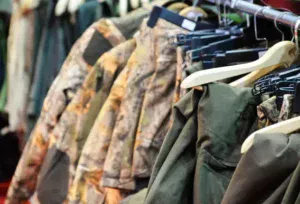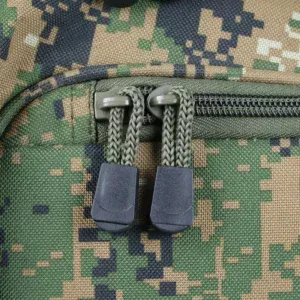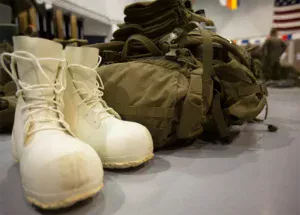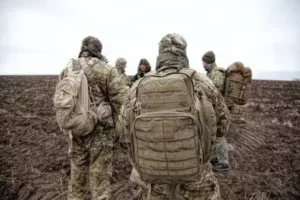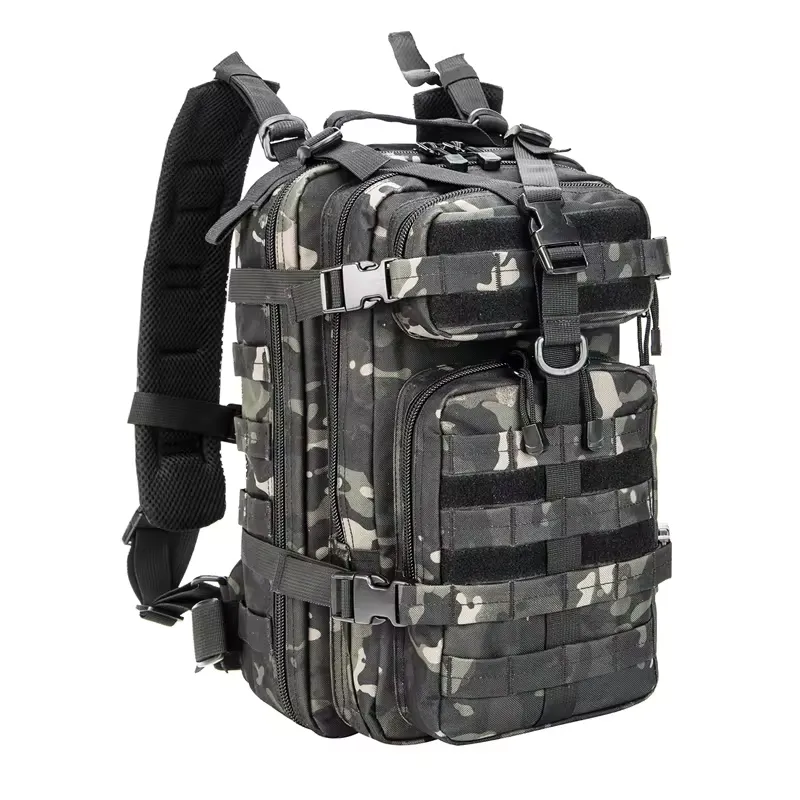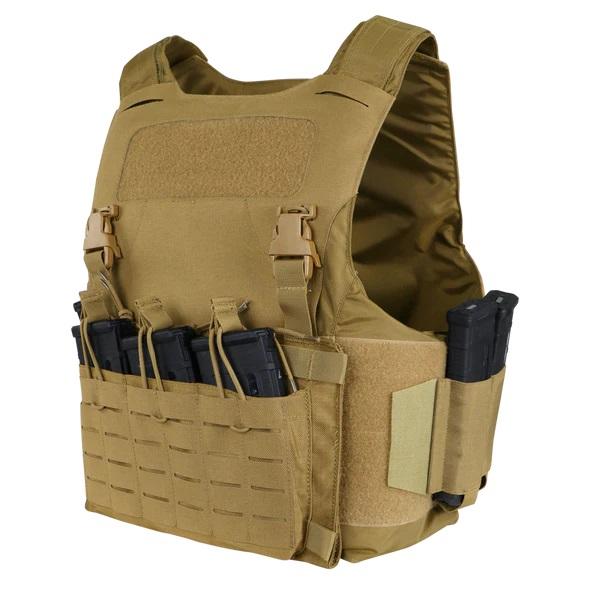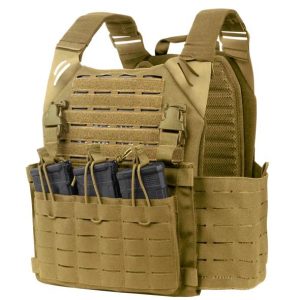Ever wonder how military backpacks went from basic bags to the rugged, high-tech gear we know today? These packs have a wild history—born from war, shaped by need, and perfected over time. Whether you’re stocking them for your clients or just curious, let’s walk through the evolution of military backpacks.
The Early Days: Simple Sacks and Heavy Loads
Back in the old days—think ancient Rome or medieval times—soldiers didn’t have fancy military backpacks. They carried stuff in leather sacks or rolled blankets.
These were tied to their backs or slung over a shoulder. No padding, no straps, just raw endurance. Armies moved slowly, and gear was basic—food, a weapon, maybe a cloak.
By the 1700s, things got a bit better. European soldiers used knapsacks —canvas or leather bags with straps. They were small, holding maybe 20 pounds, and not comfy. Still, they beat carrying everything by hand.
Canvas and leather backpack, source: Wikimedia Commons The 19th Century: Frames and Structure Arrive
Fast forward to the 1800s. Wars got bigger, and soldiers needed more gear. Enter the wooden frame backpack . Think of it like a crude rucksack—wooden slats gave it shape, and canvas held the load.
The U.S. Army used these during the Civil War. They could carry 30-40 pounds, but ouch—wood digging into your back? Not fun.
Around 1870, the Haversack showed up. It was a single-strap bag worn over one shoulder. Simple, light, and good for short marches.
But it wasn’t enough for long campaigns. Soldiers still jury-rigged extra bags or belts to carry ammo and food.
World War I: The First Real Military Backpacks
World War I changed everything. Trenches meant soldiers needed to haul more—rations, shovels, gas masks. The M1910 Haversack was the U.S. Army’s answer.
It had a canvas body, leather straps, and a roll-top design. Capacity jumped to about 30 liters. It wasn’t perfect—wet canvas got heavy—but it was a start.
The British used the 1908 Pattern Webbing , which included a small pack. It hooked to a belt system for extra gear. These early military backpacks were tough, but comfort? Not a priority.
World War II: Frames and Functionality
World War II pushed military backpacks further. Soldiers were on the move—paratroopers, jungle fighters, mountain troops. The U.S. rolled out the M1941 Haversack and later the M1945 Combat Pack .
These had metal frames for support and could carry 40-50 pounds. Canvas stayed, but designs got smarter—pockets, straps, and better weight distribution.
The Jungle Rucksack was a game-changer for Pacific troops. Light, water-resistant, and built for the heat, it showed how military backpacks could adapt to terrain.
Meanwhile, the British 37 Pattern Pack added modularity—small pouches hooked to a frame.
The Cold War Era: Durability Meets Design
Post-WWII, the Cold War brought new challenges—long missions, and harsh climates. The U.S. introduced the ALICE (All-Purpose Lightweight Individual Carrying Equipment) system in the 1970s.
It had an aluminum frame, nylon fabric, and a 50-liter capacity. Lighter than canvas and tougher than ever, ALICE packs carried 60+ pounds. They were a hit in Vietnam’s jungles.
Nylon was the big shift here. It’s strong, dries fast, and resists rot—perfect for military backpacks. Straps got padded too, making long marches bearable.
ALICE equipment, source: Wikimedia Commons The Modern Era: MOLLE and High-Tech Gear
By the 1990s, military backpacks hit peak evolution. Enter MOLLE (Modular Lightweight Load-carrying Equipment). First used by the U.S. Army in 1997, MOLLE is a system, not just a pack.
It’s got a tough nylon frame and webbing—those straps you see everywhere. Soldiers can attach pouches, holsters, or whatever they need. The MOLLE II Rucksack holds 50-80 liters and weighs about 8 pounds empty.
Materials got an upgrade too. 1000D Cordura and ballistic nylon shrug off tears and weather. Hydration slots, quick-release buckles, and ergonomic straps make these packs elite.
The Marines use the ILBE (Improved Load Bearing Equipment) —similar vibe, bigger capacity.
Learn more about MOLLE in our guide here .
Special Forces: Elite Packs for Elite Teams
Special ops teams—like Navy SEALs—needed more. They use stuff like the Mystery Ranch 3-Day Assault Pack . It’s light (around 4 pounds), 40-50 liters, and MOLLE-ready. Perfect for fast, brutal missions. These packs blend military toughness with agility.
Why It Matters for Tactical Gear Today
So, why care about this evolution? Because today’s military backpacks are the gold standard for durability. From knapsacks to MOLLE, every step made them tougher, smarter, and more useful.
For business, that’s a selling point—whether you’re supplying surplus stores, outdoor retailers, or government contracts.
They’re not just for soldiers either. Civilians buy military backpacks for hiking, prepping, or EDC. That widens your market. Stocking these means offering gear with a legacy—rugged, reliable, and ready for anything.
What’s Next for Military Backpacks?
The future’s exciting. Think lighter materials—like carbon fiber frames—or built-in tech, like solar panels for charging radios. Some prototypes even have exoskeleton support to ease heavy loads. For B2B, staying ahead means watching these trends—your clients will want the latest.
Wrapping Up
From leather sacks to MOLLE masterpieces, military backpacks have come a long way. They’ve evolved with war, tech, and soldier needs—becoming the rugged icons we sell today.
Want to stock these for your clients? Check out our backpack
